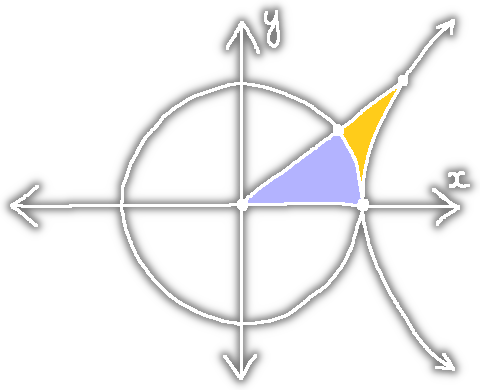Next Page - Measuring the Circle

The goal of this page is to establish the properties of circles and theory of the circular/trigonometric functions carefully and naturally while still avoiding overly annoying calculations and proofs. Most people who learn about this stuff tend to learn it in a way where nothing makes sense if you actually stop to think about it.
For example, they might learn that π is the ratio of a circle's circumference to its diameter without actually being told why this ratio should always be the same, or how one even goes about what it means to measure a circumference (because it certainly isn't with a straight ruler, I'll tell you that much).
The end result is that once these people start learning the calculus, their knowledge becomes full of circular reasoning, which I guess is fitting, but it should still be avoided. This circular reasoning originates from the fact that a lot of the things they learn about circles and the circular functions require calculus or something similar to actually establish.
Despite this, people still fall for the "you have to learn trigonometry before calculus" meme just because some stupid class they're taking decided that's how it had to be. It really gets on my nerves whenever I hear that "advice," so I decided to write this in the hopes that it will help someone who wants to learn the calculus before trigonometry.
Just to be clear, I don't have a problem with people learning whatever they're interested in, in whatever order they deem reasonable. Arc length and area are intuitive notions and it's possible to explore them without worrying about the technicals. Not everyone needs or wants full rigor straight away, if ever, and that's fine! What I have a problem with is when people say you have to learn things a certain way.
Realize that my approach to this subject means I will expect you to know the calculus already, at least at an intuitive level, with the obvious exception of everything that involves the trigonometric functions. That means knowing what derivatives and integrals are, and also how to calculate simple derivatives of rational and polynomial functions. You should also be familiar with parametric curves, but if you aren't, I'll put up an explanation of those some other time.
Next Page - Measuring the Circle
